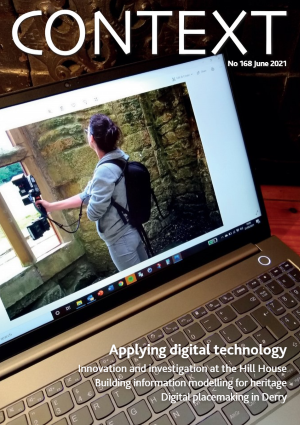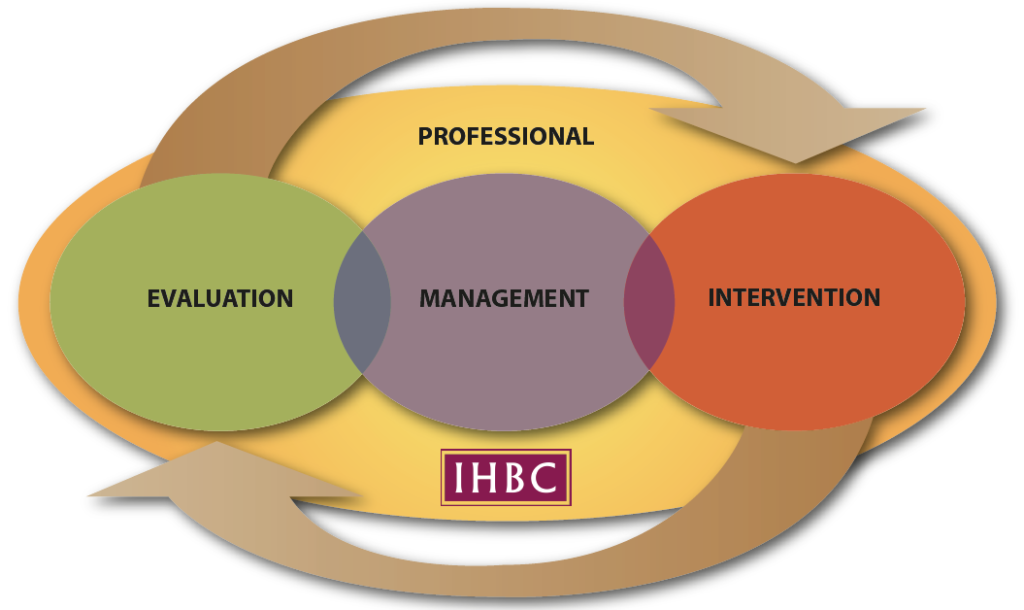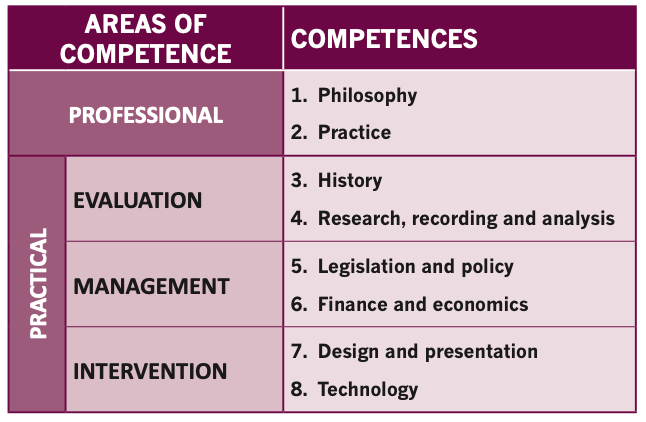 The latest issue of the IHBC membership journal Context is out, featuring the usual mix of the topical and the practical as we explore ‘Applying Digital Technology’, with familiar features and occasional nuggets: shrines in Germany; memorialising in Manchester, and Rob Cowan’s head-levelling graphic insights!
The latest issue of the IHBC membership journal Context is out, featuring the usual mix of the topical and the practical as we explore ‘Applying Digital Technology’, with familiar features and occasional nuggets: shrines in Germany; memorialising in Manchester, and Rob Cowan’s head-levelling graphic insights!
Managing change in a digital world
Over the past 15 years or so digital technology has transformed every aspect of the way we work and interact, from the use of mobile phones and computers to photography and scanning. As recently as 2007 the IHBC’s annual school was covered using a film camera, not a digital one, because few digital cameras then had enough pixels for a full A4 front cover. Now most of us carry phones with more pixels than those early digital cameras, and Wi-Fi allows us to transfer the photos seamlessly up to the cloud.
… pace of change has been phenomenal…
The pace of change has been phenomenal. On the one hand, all this technology makes our lives easier, our work faster and our output better (or at least greater), enabling us to make better-informed decisions. On the other hand, the extent and speed of change has brought problems as we all struggle to understand where this technology is best applied, and how.
… Off-the-shelf BIM systems….may seem inappropriate for many conservation projects…
One aspect that continues to concern conservation professionals is building information modelling (BIM), which Joanna Hull discusses (page 12). Off-the-shelf BIM systems designed for the construction of a new building may seem inappropriate for many conservation projects, but conservation work generates a huge variety of data that ought to be readily accessible to others. This includes digital survey drawings and scans, inspection reports and drawings, specifications, photographs of fabric before and after repair, scans of older records, and all the rest.
Whether or not an off-the-shelf BIM system may offer the best method of collating and accessing this data, it is clear that time should be set aside in every project to consider how best to integrate new and pre-existing data. Where a building’s data is not already managed by an adequate information modelling system, the problems of creating one will become more complex as the digital records accumulate over time. Hamish McMichael explores the use of BIM for retrofitting buildings and reducing carbon (page 17).
… state-of-the-art thermography…
New forms of digital survey technology provide a wealth of data that is enabling us to better understand the movement of moisture and heat in particular, if used correctly. Historic Scotland’s Sophia Mirashrafi and Maureen Young illustrate the use of state-of-the-art thermography and microwave moisture monitoring at Hill House (page 20). Michael Netter describes how digital modelling can be used in retrofitting buildings to reduce their energy use (page 19) and Paul Bryan discusses recent developments in the use of drones (page 23).
… urban centres may also need to adapt to the rise of the virtual commute…
From a heritage perspective, digital technology also has a potentially more challenging side. The increasing reliance on online shopping poses an additional threat to traditional high streets and urban centres as they emerge from lockdown, many of which were already struggling before the pandemic. In the short-term urban centres may also need to adapt to the rise of the virtual commute and the decline in real footfall, as Dave Chetwyn highlights (page 29).
… gaming the urban past: using the power and realism of video gaming…
Rapidly changing technology leading to rapid urban and environmental change calls for, more than ever, the skills of building conservationists in managing the process. Adrian Grant (page 26) gives a taste of how unfamiliar those skills may be when he describes gaming the urban past: using the power and realism of video gaming technology to communicate heritage value in urban regeneration. We may not know what is digitally around the corner for building conservation, but it could be fun.
Themed articles in Issue 168 include:
- Editorial – Managing change in a digital world
- JOANNA HULL – BIM for heritage asset management
- HAMISH MCMICHAEL – Digital technology in the historic environment
- MICHAEL NETTER – Digital modelling for retrofit
- SOPHIA MIRASHRAFI and MAUREEN YOUNG – Innovation and investigation at the Hill House
- PAUL BRYAN – Using drones for inspection and survey
- ADRIAN GRANT – Gaming the urban past
- DAVE CHETWYN – Digital media and the post-pandemic town
Additional features include:
- MICHAEL ASSELMEYER – Shrines of British and Irish saints in Germany
- MARK CLIFFORD – Conserving Manchester’s Albert Square and Memorial
Other items include regular and new features with focussed more on the IHBC, such as :
- Briefing, including
- IHBC guidance on alterations to listed buildings
- Climate and heritage
- Opinion: Cambridge Market’s intangible heritage
- Out of Context, including
- The writer’s voice: From Civics: as applied sociology by Patrick Geddes (1904)
- Periodically, including
- Transactions of the Ancient Monuments Society
- ASCHB Transactions
- Association of Preservation Technology Bulletin
- The Historic Environment
- The Victorian
- Notes from the chair
- Director’s cut
- Vox pop
- Book reviews
- New members
- New member profile
- Inter alia
Access the online archive and see the online issue
Reading Context helps IHBC members develop their skills across all of the IHBC’s
 Areas of Competence, and so is a critical baseline in addressing priorities in Continuing Professional Development (CPD)
Areas of Competence, and so is a critical baseline in addressing priorities in Continuing Professional Development (CPD)
See more IHBC background and guidance on IHBC CPD and on how you might use past, current and future issues of Context
See the formal guidance paper on IHBC CPD(scheduled for update)
See more on the IHBC Competences and Areas of Competence


